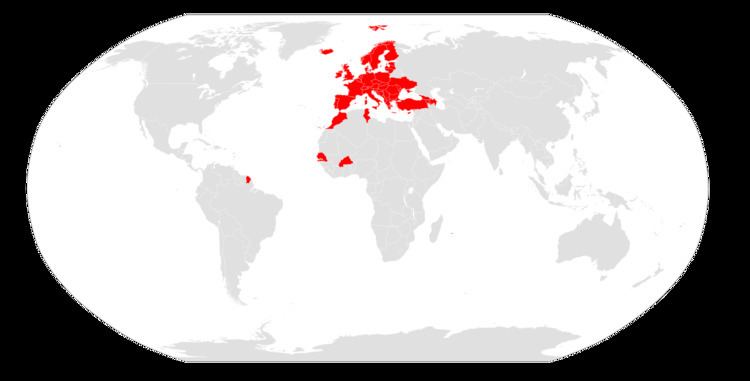Signed 19 September 1979 Effective 1 June 1982 Parties 51 | Condition 5 ratifications | |
 | ||
The Bern Convention on the Conservation of European Wildlife and Natural Habitats, also known as the Bern Convention (or Berne Convention), is a binding international legal instrument in the field of Nature Conservation, it covers the natural heritage in Europe, as well as in some African countries. The Convention was open for signature on 19 September 1979 and came into force on 1 June 1982. It is particularly concerned about protecting natural habitats and endangered species, including migratory species.
Contents
Aims and objectives
The convention has three main aims, which are stated in Article 1:
Structure
The convention is divided into:
Because this convention has a special nature, which is to include the maximum number of signatures possible, it included the eventual signing by non-members of the Council of Europe: "the member States of the Council of Europe and the other signatories hereto, Considering that the aim of the Council of Europe is to achieve a greater unity between its members,...”
It contains three articles, where it is stated the three aims of the Convention and general obligations of the Contracting Parties.
Here are set out the obligations of the Contracting Parties concerning the conservation of the habitats.
It contains the obligations of the Contracting Parties regarding the Appendices I, II, III and IV and the exceptions of these obligations.
It contains the obligations of the Contracting Parties regarding migratory species.
It contains supplementary obligations of the Contracting Parties, concerning co-operation, research, reintroduction and introduction of species.
It settles the functioning procedure of the Standing Committee and their tasks.
Contains the procedure of amendments regarding articles and Appendices of the Convention.
It contains the procedure of the arbitration of any disputes that could arise between Contracting Parties.
It contains the final arrangements of the Convention.
Four appendices set out particular species for protection. They are regularly updated by the Standing Committee, who are advised by a number of Expert Groups:
Ratifying states
Member States of the Council of Europe
States not members of the Council of Europe
International Organisations
Algeria, Cape Verde, the Holy See, San Marino and Russia are among non-signatories that have observer status at meetings of the committee.
The convention led to the creation in 1998 of the Emerald network of Areas of Special Conservation Interest (ASCIs) throughout the territory of the parties to the convention, which operates alongside the European Union's Natura 2000 programme.
Duties of Contracting Parties
All countries that have signed the convention must:
Monitoring the implementation of the convention
To achieve successfully the aims of this Convention, a number of monitoring devices were implemented.
Reporting system
Groups of experts
The chosen experts are in charge of monitoring the implementation of the Standing Committee recommendation regarding species and habitats, as well as doing their own recommendations about specific conservation problems.
Case-file System
The system is based in complaints for possible non-compliance or other problems related with the provisions of the Convention. These complaints are processed by the Secretariat, the Bureau and the Standing Committee and when they feel there is the need for further information, on-the-spot visits by independent experts can be arranged.
